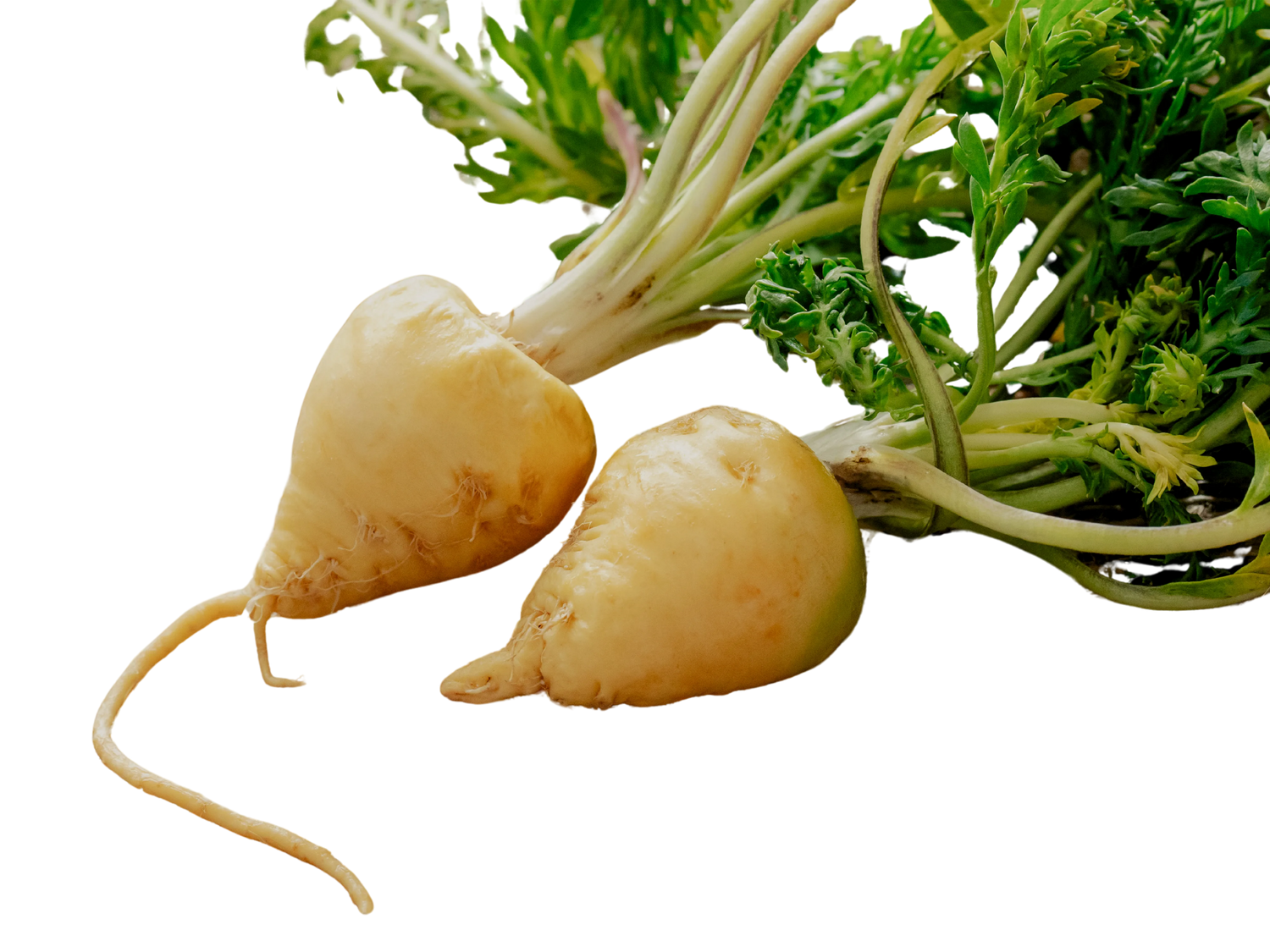
Maca root
Maca root comes from the Lepidium meyenii plant, a hardy, radish-like root vegetable native to the high Andes of Peru. Often called “Peruvian ginseng,” maca grows in harsh, high-altitude environments above 3,500 meters (11,500 feet), where few other crops can survive.
Harvesting takes place once the root matures—typically 8–9 months after planting. Farmers hand-pull the roots from the soil, dry them naturally in the sun for several weeks, and then grind them into a fine powder or sell them whole.
As a spice, maca is not pungent like typical culinary spices, but its nutty, earthy, slightly sweet flavor makes it a popular addition to smoothies, oatmeal, energy bars, and baked goods. It’s often used for its nutritional and adaptogenic properties rather than its taste alone.
Medicinally, maca root is widely used as a natural supplement and is traditionally believed to:
- Boost energy, stamina, and endurance
- Enhance libido and fertility in both men and women
- Support hormonal balance and ease menopause symptoms
- Improve mood and reduce symptoms of anxiety and depression
- Support overall vitality and resilience to stress (adaptogenic effect)

